Did you know that every movement your body makes is due to the collaboration of tiny muscle fibers? From the lightest lift to the heaviest push, these strands work together in progressive bundles, all covered in a connective substance called fascia.
And while it may seem like contracting these little musclemen is the key to mobility, the combination of contraction and stretch allows us to move and groove. So, next time you reach for something or take a step forward, give a little nod to the magic of those microscopic muscle fibers working together to keep you on your toes.
Although bending over to touch your toes may seem simple, it requires extreme stretching power. As flexibility is all about how much stretch your muscles can handle. So, get ready to limber up and show those muscles who's boss!
Why Flexibility is a Key Component of Exercise

The answer to your question on how to become more flexible is here! Physiotherapists warn that if your muscles can't stretch and relax properly, it could set off a chain reaction of aches and pains throughout your body. So don't skip those stretching sessions; you may feel the squeeze.
Do you know how to become flexible if you are very stiff? Remember that mobility can be difficult if your muscles are as stiff as a board. First, start with your joints. Joints must move through their full range of motion smoothly and without getting stuck, but tight muscles can put a severe cramp in your style.
According to Dr. Adam Rivadeneyra, a sports medicine pro, if you're unable to move as much as you should, everyday tasks and workouts could become a severe problem. So, if you want to keep your pliability primed and your flexibility flowing, remember to stretch those muscles.
Why is stretching a must-have activity for all, especially senior citizens? Picture a ballerina trying to do a high kick without proper warm-up or a baseball pitcher attempting a fastball right after leaving the locker room. In both cases, you are destined for an injury.
Even mundane things like bending down to pick up an item or lifting a suitcase can increase your chances of muscle strain and tears if your flexibility is subpar. And here's the kicker: it's even more crucial for older people since their flexibility dwindles.
So what's the solution? Keep stretching as it helps with daily tasks like wearing footwear and maintaining healthy feet. Your body is like a complex web of interconnections, a universe within itself where every muscle, bone, and joint must work in harmony to keep you moving.
But when one muscle becomes too tight, it's like a domino effect, pulling on everything nearby and causing havoc. It's like that one person who shows up to a party and suddenly throws everything out of whack.
And to compensate for this disruption, other joints must step up and take on extra work, like the backup dancer who suddenly becomes the lead. But just like in the world of backup dancers, this can lead to overuse injuries like tendinitis.
So remember, keeping your body balanced is like conducting a symphony, where every muscle must be in tune to create harmony.
How to Improve Flexibility With Different Types of Stretches
Are you tired of feeling stiff and inflexible? Well, fear not, as regular stretches are the secret to retaining your limber limbs. It's essential to keep those muscles relaxed and ready for action, regardless of age.
Science recommends minimally stretching for five minutes three to five days a week. So, no excuses! Some delightful stretches can leave you feeling as bendy as you did in your youth. Let's get flexy!
So, don't let your muscles be the only stiff and inflexible things! There are many creative ways to loosen up and stretch. So why take some time to explore what works for you and get those muscles nice and limber? Your body (and your partner, if you have one!) will thank you.
Static Stretching
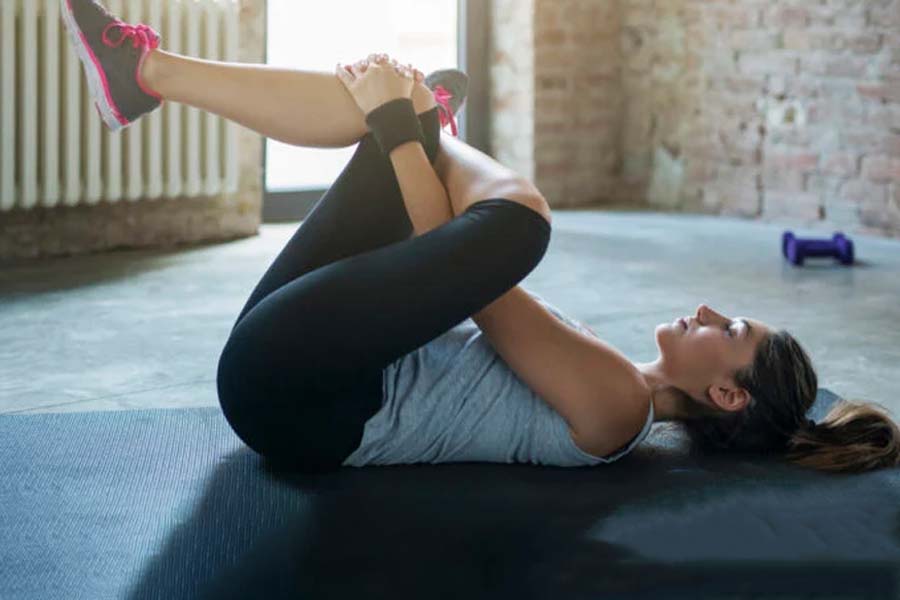
Are you feeling stiff and inflexible after a long day sitting at your desk? Try out static stretching. It's as simple as moving to the limit of your joint's range of motion, holding your leg in a foot leg stretcher for 15, 30, or more seconds, and repeating for a better, more flexible body.
You can also take your toe-touching game to new heights, give your chest muscles a chance to extend by holding onto a door frame and striding forward, or loosen up your glutes by tucking your knee to your chest.
A study shows young, healthy adults experience increased hamstring flexibility after static stretching. So what is stopping you from giving a quick stretch to your muscles?
But also be aware of the simplicity of static stretching-it can be pretty harmful if done at the wrong time.
A 2019 study shows that static stretching can decrease strength and performance if done before activity. So save your static stretches for the cooldown or random moments throughout the day when you need a break from stiffness. Your body can thank you for it!
Dynamic Stretching
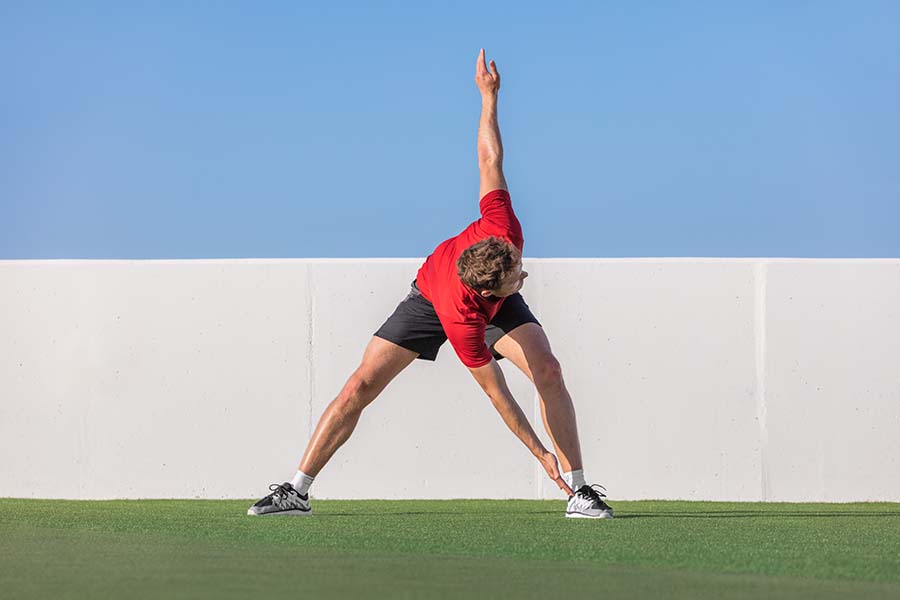
If you are struggling with joint and muscle hypermobility and your range of motion is incomplete, we have something to offer you-dynamic stretching since it is quick and straightforward to perform while managing your joints and muscles' range of motion.
Dynamic stretching helps train those muscles and connective tissues for a killer workout. By gently nudging those joints through their full range of motion, your body can get flooded with a refreshing burst of blood flow.
And why settle for average performance when you can crank it up a notch with pre-workout dynamic stretches? According to research from 2022, those limbering-up moves can boost your force, power, sprinting, and jumping skills.
So grab on your pull-up band and hold the stretch after you achieve normal full range, stay there for a while, and you are done. Get your leg swings, walking lunges, hip circles, and arm circles on!
Myofascial Release (Foam Rolling)
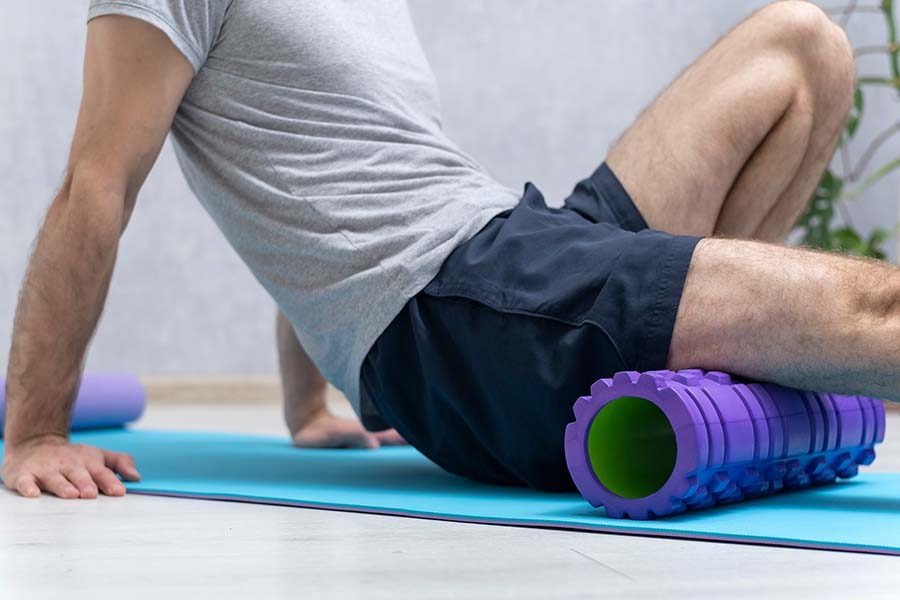
Why settle for feeling stiff and sore after a workout when you can roll your way to relaxation? Myofascial release is also called foam rolling since it uses a foam roller. So, myofascial release and massage can pressurize your connective tissues, which can loosen up your stiff muscles.
Plus, if you pair it with some dynamic stretching, you can enhance that flexibility. Don't believe us? A 2019 meta-analysis shows that athletes who foam rolled before static stretching saw more benefits than those who just stretched.
And if you think you can only roll your way to relief before a workout, think again. Research shows foam rolling after a workout can speed up muscle repair and ease post-exercise discomfort.
And do you know that even foam rolling before your workout may be the secret weapon you've been missing? While the benefits of foam rolling during recovery are minor, incorporating it pre-workout could give you a serious edge.
Ballistic Stretching
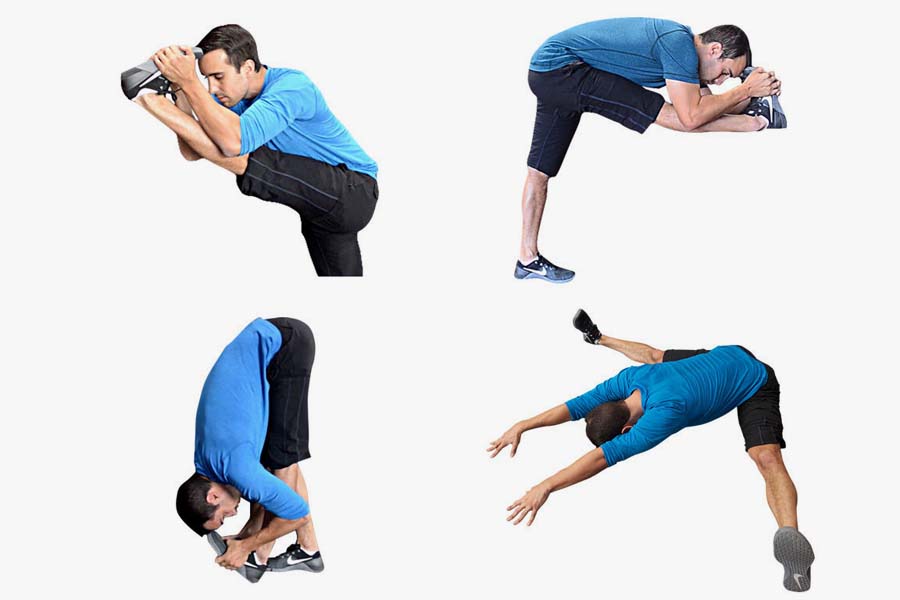
If you are tired of trying static and dynamic stretching and still need to catch up to complete your ranges, this quick stretching technique can solve all your problems and over-stretch beyond your normal range.
This dynamic stretch involves bouncing at the end of your static stretch to improve flexibility by taking your muscles past a point of automatic control. However, beware that while it may seem tempting, it also poses a potential risk for injury.
So, while you may want to bounce back and forth like you're at a '90s dance party, it's best to follow ballistic stretching under the proper supervision of your doctor or gym trainer.
Related Article: Should I Do Ballistic Stretching - Benefits, Drawbacks, and Alternates?
Active Isolated Stretching (AIS)
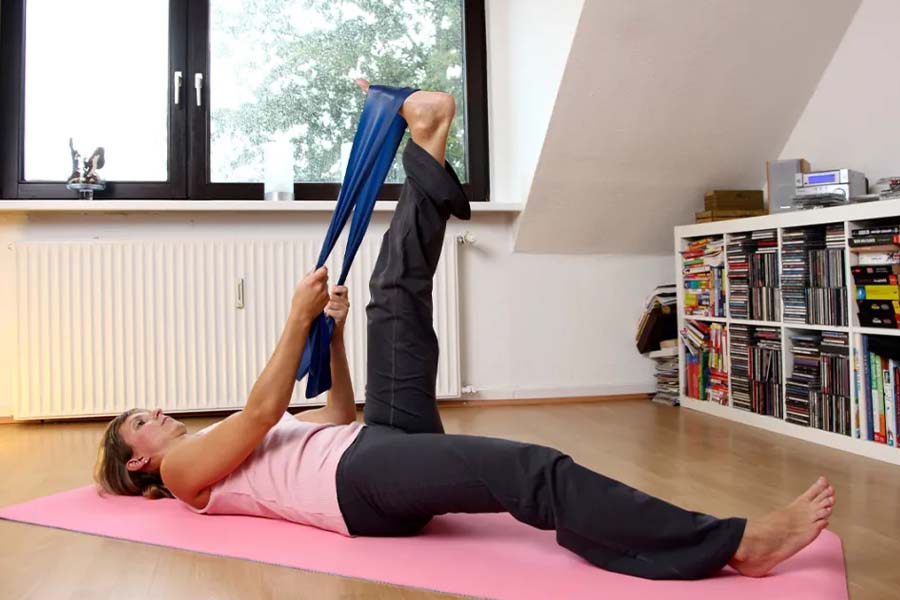
Get ready to break free of your stiff, inflexible ways. Say hello to active isolated stretches-the secret to unlocking your body's full potential. AIS is like yoga, but does yoga improve flexibility? The answer is yes. But AIS is like turbo-charging your muscles with lightning-fast stretches held for just two seconds.
And if you need proof that this isn't a bunch of hocus-pocus, check out a 2019 study demonstrating how powerful AIS can be for expanding your range of motion. This workout principle superhero knows how to retrain your muscles to relax fully, giving you a deeper and more effective stretch over time.
Plus, it has a sneaky trick: engaging and strengthening your opposing muscles helps you become an all-around powerhouse. Get ready to feel the burn-in the best way possible! So what are you waiting for? It's time to stretch to a more limber you.
Proprioceptive Neuromuscular Facilitation (PNF)
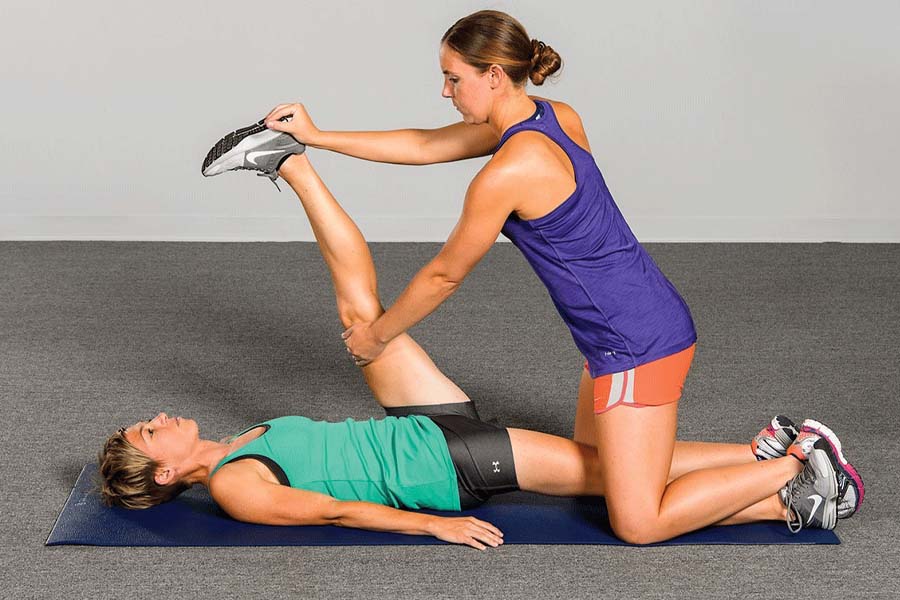
What if I tell you that stretching with a partner can be enjoyable and beneficial for your muscles? One such kind of stretching is PNF. Proprioceptive Neuromuscular Facilitation (PNF) is a form of stretching that focuses on your body's neurological system.
There are various techniques, but they all involve working with a partner who applies a little force before you stretch your muscles in a specific way! So, get ready to loosen up those muscles and bond with your workout buddy through PNF stretching!
And if you want to be as flexible as a contortionist, you've got to put in the work-and that means repetition, repetition, and repetition. As there is no shortcut to improving your flexibilit-you've got to commit to a consistent stretching routine.
So grab your yoga mat, pop on some soothing tunes, and get ready to stretch like never before. It may be difficult, but your body and inner yogi can thank you!
How Strength Training Improves Flexibility

Strength training is what you're looking for to supercharge your workout routine! It enhances your overall muscle function and mobility and can also improve your flexibility in targeted areas.
A recent study found that incorporating eccentric workouts can help you achieve greater flexibility in your lower limbs. So grab those weights and get ready to stretch those muscles further than ever before!
Who says exercising has to be boring? Shake things up and embrace your eccentric side! That's right; we're talking eccentric exercises-the perfect way to stretch and strengthen your muscles simultaneously. So, next time you hit the gym or do a home workout, take your time and enjoy the eccentric phase of each move.
If you're hitting the gym for strength training, you want those muscles to be firing on all cylinders. But it's about more than bulk-you also want to be sure you're staying within the range of mobility along the way.
So give that pushup all you've got, lowering your body as close to the floor as possible. It might hurt a bit, but your body can thank you later.
What Happens When You Bend the Wrong Way
Are you tired of feeling like a stiff board during workouts or struggling with everyday activities, or is your traditional stretching not cutting it? It's time to call a qualified and certified personal trainer, physical therapist, or sports medicine physician.
No shame in seeking help to understand what's going on with your flexibility. So, be aware since it's more than just a lack of flexibility that impedes mobility. Arthritis, injuries, and muscle imbalances are just some troublemakers that can damper your range of motion.
But don't just stretch your problems away; other solutions may lurk. Luckily, you've got the brains to figure it out. For example, don't let tight hamstrings hold you back from your fitness goals! As it turns out, weak core muscles may be to blame for those pesky tightnesses. Yes, you read that right - your core could be the culprit.
When your core isn't up to snuff, the pelvis can become unstable, resulting in unwanted ups and downs that leave your hamstrings feeling more like guitar strings. So, don't waste time stretching-a strong core is the way to go. Also, be warned that too much flexibility can lead to unexpected consequences!
Having hypermobile joints means they can move past their normal range of motion, and this condition is more rampant among kids than adults. The sad part is that it can be because of weak or loose connective tissues.
So, don't let the ligaments loosen up, though it can lead to dislocated joints, sprains, and strains that can leave you whimpering in pain. To top it off, it may even heighten your chances of arthritis in the long run! So, the advice is not to push your limits too far, even when you can.
Related Article: 6 Best Pilates Bar Exercises That Can Increase Your Flexibility
Takeaway
The benefits of stretching are robust and can always be tailored to fit your goals and lifestyle. As a reminder, start slow and easy to prevent injury. So, don't be stiff! Your mobility and muscular function rely on a complex blend of factors. One of the critical ingredients to smooth, functioning muscles is flexibility.
With improved flexibility comes greater mobility, range of motion, and overall strength. Committing a few minutes daily to an effective stretching routine wouldn't hurt. Being flexible is like having a superpower- so unleash yours
You can strategically increase muscle, joint suppleness, and elasticity with everything you know about flexibility today! Now go forth and become the most supple being you've ever known! Also, when planning your exercise routine, remember to limber up and stretch it out. Your body and your future self will thank you for it!
Reading List
Article Sources
- Vetter, Sebastian, et al. "The Effects of Eccentric Strength Training on Flexibility and Strength in Healthy Samples and Laboratory Settings: A Systematic Review." Frontiers in Physiology, vol. 13, Apr. 2022, p. 873370. PubMed Central, https://doi.org/10.3389/fphys.2022.873370.
- Qamar, Muhammad Mustafa, et al. "Active Isolated Stretching; a New Emerging Remedy." Rawal Medical Journal, vol. 44, no. 3, July 2019, pp. 646-646. www.rmj.org.pk, https://www.rmj.org.pk/?mno=18103.
- Wiewelhove, Thimo, et al. "A Meta-Analysis of the Effects of Foam Rolling on Performance and Recovery." Frontiers in Physiology, vol. 10, Apr. 2019, p. 376. PubMed Central, https://doi.org/10.3389/fphys.2019.00376.
- Bashir, Marrium, et al. "Effects of Functional Training on Sprinting, Jumping, and Functional Movement in Athletes: A Systematic Review." Frontiers in Physiology, vol. 13, Nov. 2022, p. 1045870. PubMed Central, https://doi.org/10.3389/fphys.2022.1045870.
- Chaabene, Helmi, et al. "Acute Effects of Static Stretching on Muscle Strength and Power: An Attempt to Clarify Previous Caveats." Frontiers in Physiology, vol. 10, Nov. 2019, p. 1468. PubMed Central, https://doi.org/10.3389/fphys.2019.01468
- Medeiros, Diulian M., et al. "Influence of Static Stretching on Hamstring Flexibility in Healthy Young Adults: Systematic Review and Meta-Analysis." Physiotherapy Theory and Practice, vol. 32, no. 6, Aug. 2016, pp. 438-45. PubMed, https://doi.org/10.1080/09593985.2016.1204401.
 Skip to content
Skip to content











